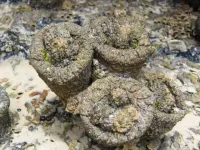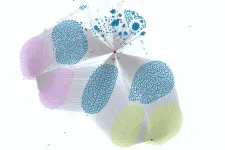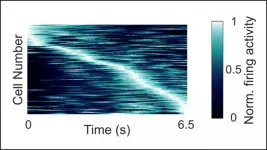DNA data and modelling reveal potential spread of invasive species
2021-06-28
(Press-News.org) Scientists at the University of Southampton have found that a marine invasive species - a sea squirt that lives on rocky shores - could spread along 3,500 kilometres of South American coastline if climate change or human activities alter sea conditions.
The researchers - working with colleagues at Pontificia Universidad Católica de Chile; Flinders University, Australia; University of Johannesburg and Rhodes University, South Africa - analysed the creature's DNA and used predictive modelling to identify regions it could move to and thrive in.1 Findings are published in the journal PNAS.
The team took a multidisciplinary approach to predict the potential distribution of a species that is currently restricted. Studying species with small distributions provides a unique opportunity to understand how some eventually become widespread.
Pyura praeputialis is an invertebrate that dominates the ecology of the regions it lives in and has the capacity to alter, fundamentally, coastal habitats. By outcompeting and overgrowing native fauna, invasive species such as this can cause impacts to biodiversity and even important economic activities.
The team sequenced the DNA of 190 samples from 13 sites along South America and Australia. They discovered that the species found in South America originated from a single region off Sydney, Australia - possibly transported to Antofagasta Bay in Chile on the hulls of wooden trading boats over 100 years ago. The population has remained trapped in the bay ever since, contained within its body of relatively warm water, which is 2-3 degrees higher than the surrounding sea.
However, this latest study suggests that just a slight change in currents, sea temperature and/or shipping routes may lead to an unchallenged expansion of the species to encompass a vast portion of coast, including northern Chile, Peru and much of Ecuador.
Lead researcher, research fellow Jamie Hudson comments: "Understanding why some species are widespread, whereas others have narrow ranges is a fundamental question in biological studies. Our work shows the importance that combining genomic data from DNA and habitat modelling can have in helping predict potential changes in the distribution of species and their impacts.
"The unusual conditions of Antofagasta Bay provided us with ideal conditions to study a species which has had its distribution restricted by local conditions. We found high genomic diversity in both native and introduced populations, indicating high adaptive potential in Chile."
The researchers concluded that further monitoring of Pyura praeputialis in the region is strongly recommended and that, more generally, future studies should consider both habitat suitability and genomic data to assess holistically the spread potential of invasive species.
INFORMATION:
Notes to Editors
1) The researchers used population genomics and species distribution modelling to investigate ecological and evolutionary mechanisms that shape the distribution of this invasive species.
2) For interviews with Jamie Hudson please contact, Peter Franklin, Media Relations, University of Southampton. Tel: 07748 321087 Email: p.franklin@southampton.ac.uk
3) The paper Genomics-informed models reveal extensive stretches of coastline under threat by an ecologically dominant invasive species is published in the journal PNAS at https://doi.org/10.1073/pnas.2022169118
4) The University of Southampton drives original thinking, turns knowledge into action and impact, and creates solutions to the world's challenges. We are among the top 100 institutions globally (QS World University Rankings 2021). Our academics are leaders in their fields, forging links with high-profile international businesses and organisations, and inspiring a 22,000-strong community of exceptional students, from over 135 countries worldwide. Through our high-quality education, the University helps students on a journey of discovery to realise their potential and join our global network of over 200,000 alumni. http://www.southampton.ac.uk
5) For more about Ocean and Earth Science at the University of Southampton visit: https://www.southampton.ac.uk/oes/index.page
[Attachments] See images for this press release:

ELSE PRESS RELEASES FROM THIS DATE:
2021-06-28
A new approach to molecular drug design has yielded a highly promising bladder cancer drug, which induced rapid shedding of tumour cells and resulted in a significant reduction in tumour size when used in clinical trials.
These potent effects were seen in patients with non-muscle invasive bladder cancer (NMIBC) and the treatment was shown to be safe, as no drug-related side effects were observed.
The exciting research involved a collaborative group of scientists from Trinity College Dublin, Charles University and Motol Hospital (Prague), Lund University, and startup company Hamlet Pharma. The study has just been published in leading journal Nature Communications.
Bladder cancer - a global killer
Bladder cancer is the fifth most common malignancy in Europe (and the ...
2021-06-28
Preliminary results from the European gene therapy trial for Crigler-Najjar syndrome, conducted by Genethon in collaboration with European network CureCN, were presented at the EASL (European Association for the Study of the Liver) annual International Liver Congress on June 26. Based on initial observations, the drug candidate is well tolerated and the first therapeutic effects have been demonstrated, to be confirmed as the trial continues.
Crigler-Najjar syndrome is a rare genetic liver disease characterized by abnormally high levels of bilirubin in the blood (hyperbilirubinemia). This accumulation of bilirubin is caused by a deficiency of the UGT1A1 enzyme, responsible for transforming bilirubin into a substance that can be eliminated by the ...
2021-06-28
ATLANTA - JUNE 28, 2021 - A new study finds evidence for adverse effects of the COVID-19 pandemic on declines in cancer detection and surgical treatments. The study, appearing in JNCI: The Journal of the National Cancer Institute, finds a 10.2% decline in real-time electronic pathology reports from population-based cancer registries in 2020 compared with those in 2019.
This study observation period, through December 2020, is one of the longest to date for evaluating the effects of the COVID-19 pandemic on cancer-related trends. To learn more about the indirect effects of the pandemic on cancer care, investigators led by Robin Yabroff, PhD, MBA of the American ...
2021-06-28
Up to 7 million people each year receive care in an emergency department (ED) for chest pain, a symptom of a potential heart condition. Over 80 percent of chest pain patients, however, ultimately have no evidence of cardiovascular disease or acute coronary syndrome. To disincentivize patients from over-utilizing costly care, insurers and employers are increasingly opting for high-deductible health plans (HDHPs) that require significant out-of-pocket spending before coverage begins. Researchers from Brigham and Women's Hospital and Harvard Pilgrim Health Care Institute investigated whether ...
2021-06-28
The internet is full of dangers: Sensitive data can be leaked, malicious websites can allow hackers to access private computers. The Security & Privacy Research Unit at TU Wien in collaboration with Ca' Foscari University has now uncovered a new important security vulnerability that has been overlooked so far. Large websites often have many subdomains - for example, "sub.example.com" could be a subdomain of the website "example.com". With certain tricks, it is possible to take control of such subdomains. And if that happens, new security holes open up that also ...
2021-06-28
The exoplanet satellite hunter CHEOPS of the European Space Agency (ESA), in which the Instituto de Astrofísica de Canarias (IAC) is participating along with other European institutions, has unexpectedly detected a third planet passing in front of its star while it was exploring two previously known planets around the same star. This transit, according to researchers, will reveal exciting details about a strange planet "without a known equivalent".
The discovery is one of the first results of CHEOPS (CHaracterising ExOPlanet Satellite) and the first time that an exoplanet has been seen with a period longer than 100 days transiting a star which is sufficiently ...
2021-06-28
Scientists of Tomsk Polytechnic University were able to obtain polytetrafluoroethylene (PTFE) membranes using electrospinning. PTFE is known to be the most stable existent polymer. According to the scientists, it is a simple, affordable and easily scalable method, which will allow obtaining chemically stable membranes in industrial-scale production. The membranes can be used in petrochemical, aerospace, nuclear industries, carbon-free energy and medicine.
The latest results of the research of physical and chemical properties and biocompatibility of the obtained membranes are published ...
2021-06-28
The U.S. Food and Drug Administration's controversial decision to approve aducanumab for the treatment of Alzheimer's disease raises at least three major ethical issues that need to be addressed, states a new article in the Hastings Center Report:
Billions of dollars in Medicare resources (which is to say, taxpayer dollars) are at risk of being unjustly squandered.
Physicians must choose between facilitating this unjust squandering and denying desperate patients and families access to this drug.
Patients and families are having false hopes legitimated and encouraged when physicians prescribe aducanumab.
The drug's approval was contrary to the nearly unanimous judgment of an FDA advisory committee that there was little reliable evidence of significant ...
2021-06-28
HOUSTON - (June 28, 2021) - Rice University computer scientists are sending RAMBO to rescue genomic researchers who sometimes wait days or weeks for search results from enormous DNA databases.
DNA sequencing is so popular, genomic datasets are doubling in size every two years, and the tools to search the data haven't kept pace. Researchers who compare DNA across genomes or study the evolution of organisms like the virus that causes COVID-19 often wait weeks for software to index large, "metagenomic" databases, which get bigger every month and are now measured in petabytes.
RAMBO, which is short for "repeated and merged bloom filter," is a new method that can cut indexing times for such ...
2021-06-28
Neurons in the hippocampus fire during specific moments in time, according to research recently published in JNeurosci. The cells may contribute to memory by encoding information about the time and order of events.
Episodic memories involve remembering the "what, where, and when" of past experiences. The "where" may be encoded by place cells in the hippocampus, which fire in response to specific locations. Rodents have hippocampal neurons that fire in response to specific moments in time -- the "when" -- but until recently it was not known if the human brain contained them too.
Reddy et al. recorded the electrical activity of neurons in the hippocampus of epilepsy patients undergoing diagnostic invasive monitoring ...
LAST 30 PRESS RELEASES:
[Press-News.org] DNA data and modelling reveal potential spread of invasive species




